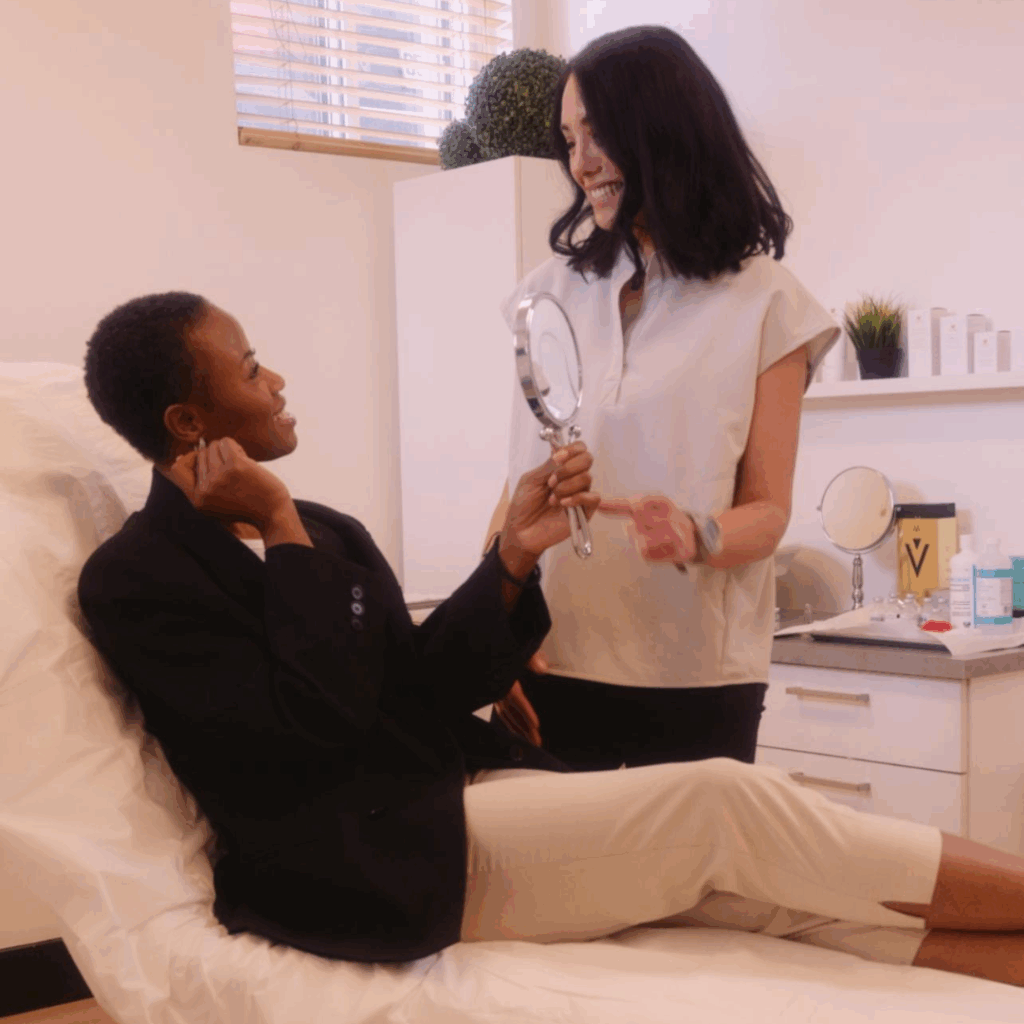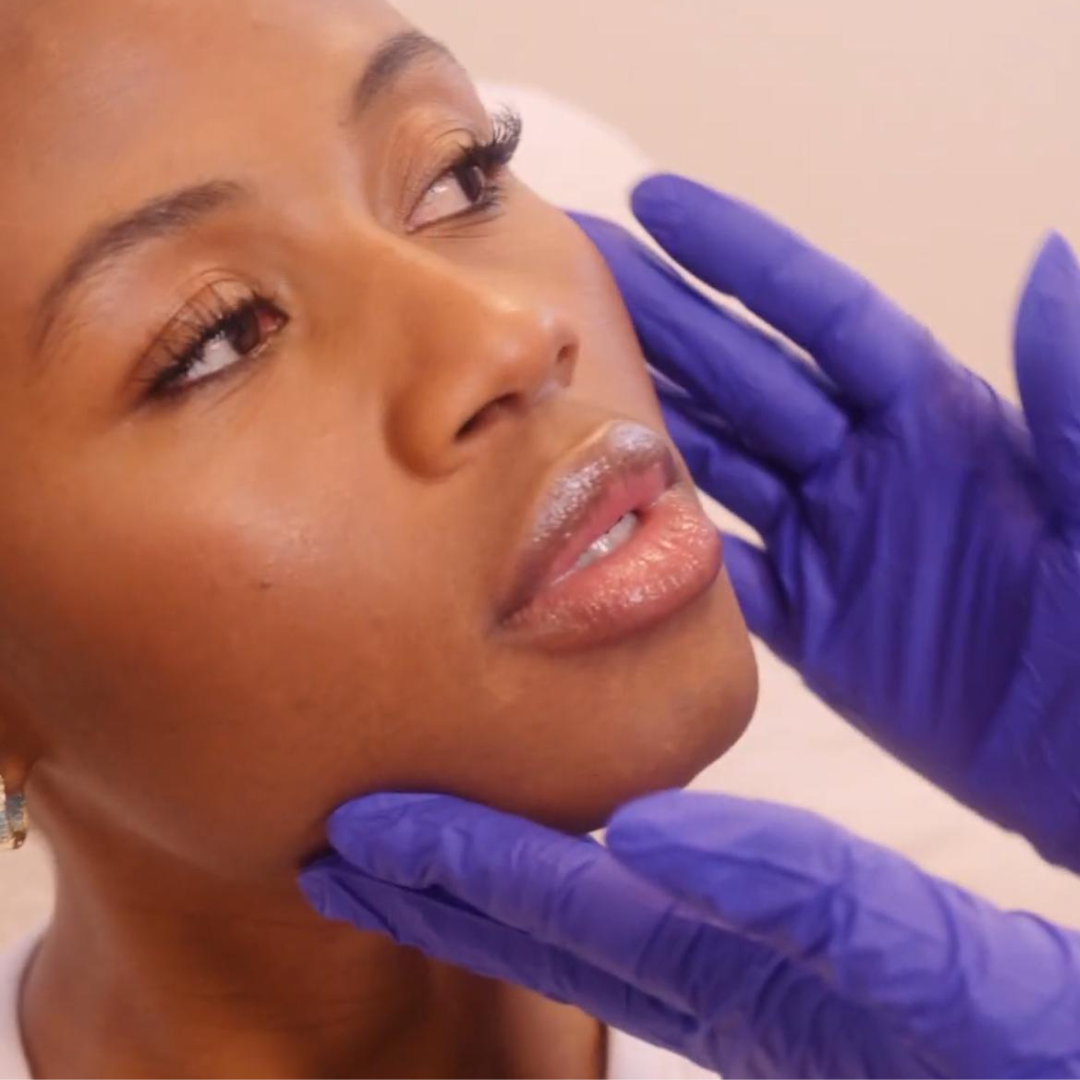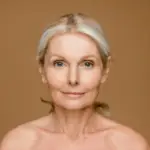Retreating Chin
Correcting a retreating chin is one of the most common requests in cosmetic surgery and medicine consultations. And for good reason, as this part of the face quickly draws attention since it occupies one-third of the face. Fortunately, there are various surgical and non-surgical solutions to address this type of issue. Discover, with MRockland, the different possible treatments to correct a retreating chin.
The unique Clinique M approach
At Clinique M, we favor a natural and harmonious approach to correcting a receding chin. Our expert doctors use advanced techniques, such as fillers, to reshape the profile and restore facial balance without surgery. Each treatment is personalized to achieve a subtle, elegant result tailored to your features.

Recommended Treatment

Dermal Fillers
Hyaluronic acid–based dermal fillers help project the chin, rebalance the profile, and harmonize the face, without surgery.
Our approach to correct a recessed chin
Retreating Chin : What Is It ?
Also known as a recessed chin or retrogenia, a retreating chin refers to a chin that is more recessed compared to the rest of the face. It is positioned backward towards the neck. From the side view, the chin is not aligned with the rest of your face. This situation occurs when the lower jaw bone (the mandible) is positioned too far back. This causes the chin to appear recessed.
The phenomenon of a retreating chin is encountered in both men and women. This issue in anatomy accentuates the size of the nose and gives the neck an excessively thick appearance. In extreme cases, it has a greater impact on facial aesthetics with misalignment of teeth, breathing or sleep disorders. This physical disorder can have a significant impact on the overall appearance of your face.
It sometimes gives the impression that the nose or upper lip is larger. Patients who request correction usually complain about their profile, which they do not find very aesthetic. People with retreating chins may lose their self-esteem and feel embarrassed because of the appearance of their faces. Embarrassment can increase with age as tissues become looser and a double chin appears.
What Are the Causes and Consequences of a Retreating Chin ?
The causes of this physical dysfunction are often hereditary. It mainly involves a malformation at the jaw level. It appears from birth and can worsen as the child grows. A retreating chin is characterized by significant development of the upper jaw or insufficient growth of the lower jaw. This can also be caused by a combination of both factors.
At the time of diagnosis, the professional must know the dental history of the patient’s family to determine if the cause of the retreating chin is related to a genetic predisposition. This malformation at the jaw level also results from bad habits acquired during childhood (chronic mouth breathing, thumb sucking, allergies, swallowing, deficient respiratory function, etc.).

Possible Treatments
A retreating chin is not inevitable. There are various treatments available to remedy it. However, the effectiveness of the solutions varies depending on the degree of retrognathia and the age of the patient. The surgeon will need to examine the patient’s mouth to determine if genioplasty is necessary.

Non-Surgical Treatments
Surgical Treatments
Free consultation
Non-Surgical Treatments
Non-surgical treatments for a retreating chin are an effective alternative to orthognathic surgery to treat cases of a receding chin.
Filler Agents
It is primarily a molecule naturally present in the body. It is found in the skin where it ensures both filling of space between fibers and hydration. Hyaluronic acid is used in aesthetic medicine as a filling product, by intradermal injections. Hyaluronic acid injections in a retreating chin can indeed help advance it without surgery.
Hyaluronic acid injections in a retreating chin can indeed help to accentuate its projection by increasing and reshaping its volumes. These injections do not require anesthesia and are performed in the office. The product is injected using a micro cannula or a very fine needle, according to an established dosage. The session lasts barely twenty minutes and does not result in social eviction.
The results of hyaluronic acid treatment appear immediately and reach their final stage after about 10 days. The chin will then have gained projection and volume, and the entire face will be redrawn. The effects last, on average, 18 months. The treatment is renewable even before the complete resorption of the injected hyaluronic acid.
Surgical Treatments
A retreating chin in adults is more difficult to correct than in children. In the most common cases of mandibular retrognathia affecting adult patients, surgery will be the recommended treatment. It can be genioplasty or orthognathic surgery.
Genioplasty for Correcting a Retreating Chin
In adults, mandibular retrognathia is more difficult to correct than in a younger patient. It is often the recommended treatment if the condition affects an adult. Genioplasty improves the appearance of your lower lip and chin shape by advancing the chin bone. This technique is performed for patients with a retreating chin and good occlusion. In such cases, genioplasty should be associated with orthognathic surgery to achieve better facial balance.
The surgeon may decide to perform a chin implant. He positions the prosthesis through the oral cavity on the front part of the lower jaw. This allows him to accentuate its projection. However, this technique involves the placement of a resorbable foreign body that can pose long-term problems. Genioplasty to correct the chin also involves performing a minimal fracture of the mandible to advance it. This delicate operation must be performed by a surgeon specializing in facial orthopedics.
Orthognathic Surgery
This solution can also be used to correct the position and size of the mandible and maxilla to restore the aesthetic aspect of the face. Two types of surgery can be performed :
- bimaxillary orthognathic surgery (the surgeon will intervene on both jaws),
- monomaxillary orthognathic surgery (it concerns only the lower or upper jaw).
The first technique is the most practiced in maxillofacial surgery. It combines surgery of the maxilla with that of the mandible. Both jaws are then modified simultaneously.
Monomaxillary orthognathic surgery allows the patient’s lower jaw to be moved forward. In many cases, it must be accompanied by good orthodontic treatment to correct the receding chin completely.
Restore Volume and Contour with Filler Agents
Discover how Clinique M corrects a receding chin using advanced non-surgical techniques. In this video, our medical director shows you how dermal filler (hyaluronic acid) injections can reshape the profile, restore facial balance, and deliver a natural-looking result, without surgery.
Testimonials


FAQ
This anomaly manifests during the individual’s growth and can worsen progressively. Therefore, a retreating chin may be present from early childhood, even at birth. However, any intervention is only feasible from the age of 18, when the patient’s face has completed its full ossification process.
The use of hyaluronic acid helps improve chin projection without surgical intervention. Hyaluronic acid injections at the chin aim to intensify and reshape its volumes. These injections do not require anesthesia and can be done in the office.
No, the treatment is generally well tolerated. A fine cannula or a skinny needle is used, and a numbing cream can be applied for added comfort.
On average, between 12 and 18 months. The treatment can be safely repeated as needed.
Yes, Clinique M’s approach emphasizes harmonious, subtle proportions. The goal is to rebalance the profile, not to transform the face.
Genioplasty is generally considered a safe procedure when performed by an experienced surgeon. However, as with any surgical intervention, there are potential risks and complications. These may include infection, bleeding, nerve damage, and dissatisfaction with the aesthetic outcome. Discussing these risks thoroughly with your surgeon before undergoing genioplasty is crucial.
The after-effects are mild: slight redness, swelling, or a small bruise may appear, but they usually fade quickly within a few days.
Injections offer immediate correction, are reversible, and require no downtime. Surgery (genioplasty) is reserved for more severe or functional cases and entails an operation and a recovery period.
Yes, it is common to combine chin injections with jawline injections or other facial treatments to enhance overall balance and profile definition.
Your transformation starts here
Do not hesitate to contact us for a personalized consultation and to begin your transformation.
* Results may vary from person to person. We present, to the best of our knowledge, an average of the results obtained. No guarantee is offered. Our goal is to properly evaluate your profile so that you can make an informed decision.
Get a free consultation*
Consultation without obligation
Thousands of satisfied clients have trusted our medical-aesthetic clinic for over 15 years.
Thousands of satisfied customers




A trusted medical-aesthetic clinic for over 15 years.
⭐️⭐️⭐️⭐️⭐️ — 4.9/5 on Google
Our commitment
Response within 24 hours
Personalized treatment
Contact Us
Phone
(438) 601-4718
Our Address
233 Av. Dunbar, Mont-Royal, QC H3P 2H4, Canada

